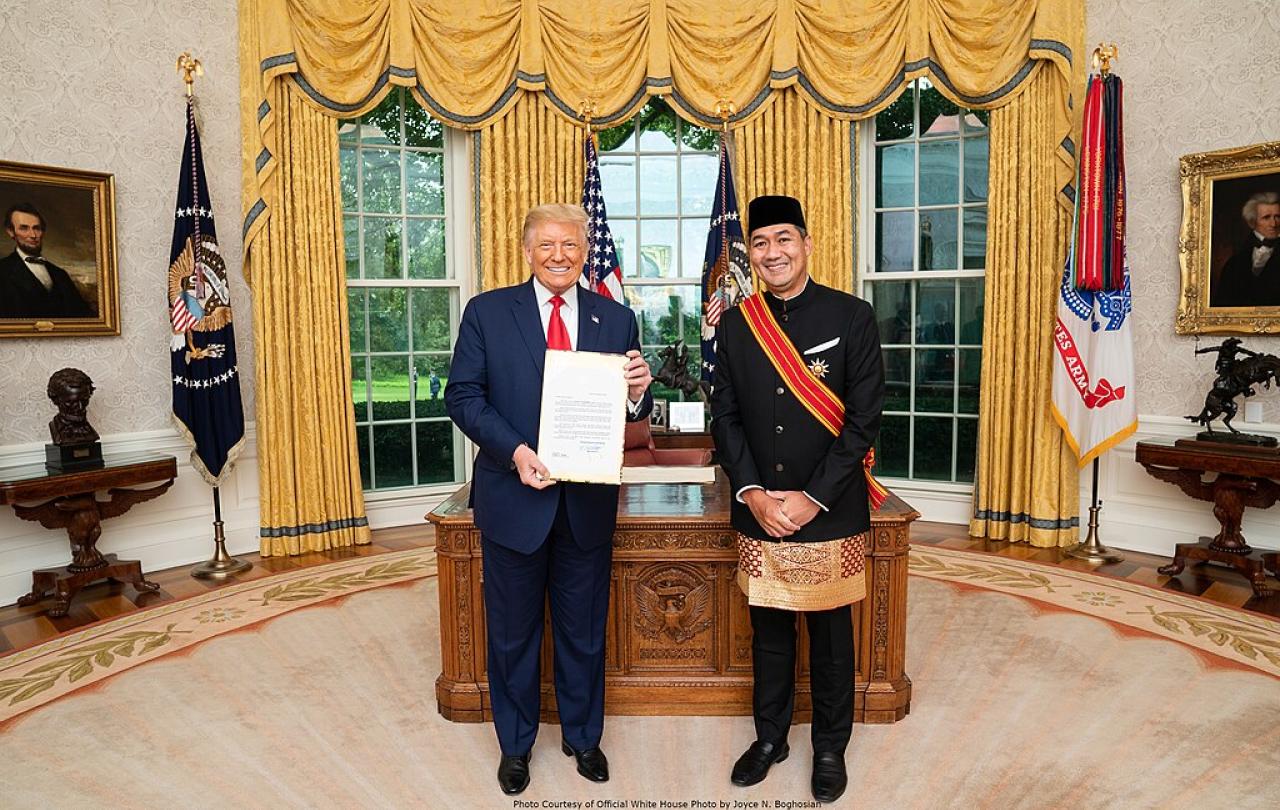
The American election result, whatever the case, is a landmark event in geopolitics. And here, it is unclear which result is better for the world in the long-term, given the ambiguous motives, interests and intentions of its main characters.
Whereas the Biden Administration led by the Democrats has been fraught with war, the Trump Administration was comparatively peaceful, with breakthroughs such as the historic Abraham Accords. Yet, the rhetoric of President Trump is aggressive and divisive.
Despite mainstream media assertions focused on the clear best choice in the election, a balanced perspective is necessary involving consideration of trade-offs between what the parties and their leaders each offer. This balance, however, is difficult to achieve as polarisation encourages retrenchment into simple views.
As the American election approaches, it is worth considering what a diplomatic approach to an election transition might entail. Here we can look to the example of Henry Kissinger, whose diplomatic mindset is illustrated in Barry Gewen’s The Inevitability of Tragedy. Gewen eloquently illustrates the Kissingerian – even if often cold-hearted – approach to the consideration of trade-offs in diplomacy.
Gewen traces the early-life experience of Kissinger, a German Jew forced to flee Nazi persecution, both serving in the US Army and attending Harvard. Unlike his American peers, Kissinger understood through personal experience that authoritarianism could rise through democratic means, Adolph Hitler the primary example.
It is partly for this reason that Kissinger was willing as US Secretary of State to intervene in the affairs of foreign states to halt dictators emerging through democratic processes. The trade-off was here between respect of democratic process and the possibility of dictatorship, a trade-off which Americans without German-Nazi experience would never understand and which they saw as deeply unsettling.
Kissinger is the archetypal diplomat. His example is worth reflecting on in the wake of the American elections. Kissinger approached geopolitics with little emotion, instead considering what course of action in a particular situation served as the least worst evil available.
He engaged across a wide variety of networks, talking with individuals who would not speak with each other. And he maintained a considerable sense of calm throughout his career as both an actor and commentator, responding to events as they developed.
An initial consideration in emerging from the American elections is that too much emotionality – amplified by political polarization – will expose politicians, diplomats and the public to risk. Emotion colours careful, strategic calculation of various scenarios and actions across potential scenarios.
‘People constantly show you who they are; we are just too busy to notice,’
An effective diplomatic (or strategist) will carefully consider what might happen and think through potential steps in case these realities actually transpire, while recognising that too much anticipation risks cascading into fantasy. Too much emotion impedes this careful process of reflection and deliberation as part of the development of strategy.
A second element of effective diplomacy and strategy is to consider people as they are, rather than rely on superficial descriptions in the media, biased second-hand accounts or who or what one hopes another person is. People’s motives, intentions and interests are not easily discernible at first glance, instead requiring careful probing and questioning.
At the same time, there are few more accurate sayings than ‘People constantly show you who they are; we are just too busy to notice,’ conveying that counterparts are always providing information as to who they are, few careful or disciplined enough to mask their real thinking.
An effective diplomat might consider the early upbringing – much like that of Kissinger – that shapes a person’s character and behaviour, if not their worldview informing action.
Consider Donald J. Trump, learning right from wrong on the streets of New York City via the mentorship of lawyer Roy Cohn, who served as Chief Counsel to Joseph McCarthy while McCarthy prosecuted potential American communist sympathisers.
Cohn’s rules of life, work and play were as follows (these summarized by a friend well-acquainted with Cohn and his colleagues): ‘One, attack, attack, attack! Two, deny everything! Three, always claim victory!’ The logic of these three rules of life are readily understandable when considering the harsh New York realities within which Cohn and later Trump operated.
These considerations are overlooked, however, amid the onslaught of media which fails to consider what really shapes the character of a man or woman.
Curiosity, a critical mindset and self-restraint in the face of the human temptation to reach rapid and satisfying answers are here necessary, as part of figuring out what exactly is driving action.
A wise diplomat would pay particular attention to these pivotal factors – such as the influence of a long-standing mentor or advisor – as they might manifest in the present. This requires an intellectually honest and serious consideration of the worldview that shapes a counterpart, rather than considering superficial media commentary.
Third, a wise diplomat will maintain relations across a wide variety of networks, understanding that it is fine to talk with two or multiple individuals whose own relations are fractured (in fact, these strains in relations can be beneficial within diplomacy, the diplomat in this case able to play broker as he or she needs or wishes).
The maintenance of broad networks is vital, because this enables action under a wide array of potential circumstances, understanding that anything can happen (we are here reminded of Harold MacMillan’s saying “Events, dear boy, events!”) And a key lesson in diplomacy and in the cultivation of strategy is that, once crises unfold, it is the preparatory work in developing networks and alliances that counts; little new network-formation is possible afterwards.
The previous two points suggest that a wise diplomat will not pay too much attention to what is in the media, but will instead consider their own learning gleaned through in-person interactions with others, as well as the perspective of their most trusted contacts. Curiosity, a critical mindset and self-restraint in the face of the human temptation to reach rapid and satisfying answers are here necessary, as part of figuring out what exactly is driving action, and what can in turn be done to shape action in accordance with interests.
Finally, an effective diplomat will not try to play God, serving as the arbiter of right or wrong, adopting instead a more considered approach anticipating and responding to circumstances as they gradually or quickly evolve. Effective strategy requires an aloof approach (caring – but not caring too much), removing the self from a given situation so as not to allow natural human vices such as presumptiveness, arrogance or short-term self-interest to affect judgment.
And the American election bring with them a number of trade-offs, these to be weighed carefully by American citizens, as well as by diplomats and strategists in other countries. These trade-offs will be considered most effectively if approached with calmness – the aloof, even if cold-hearted, approach personified by Henry Kissinger.
In an age of catastrophising, emphasing emotion, it is easy to descend rapidly into despair, rather than consider action from a long-term perspective. Diplomacy and strategy require the latter, which will be a key to success for those who emerge effective in advancing their interests in the wake of the American elections.





